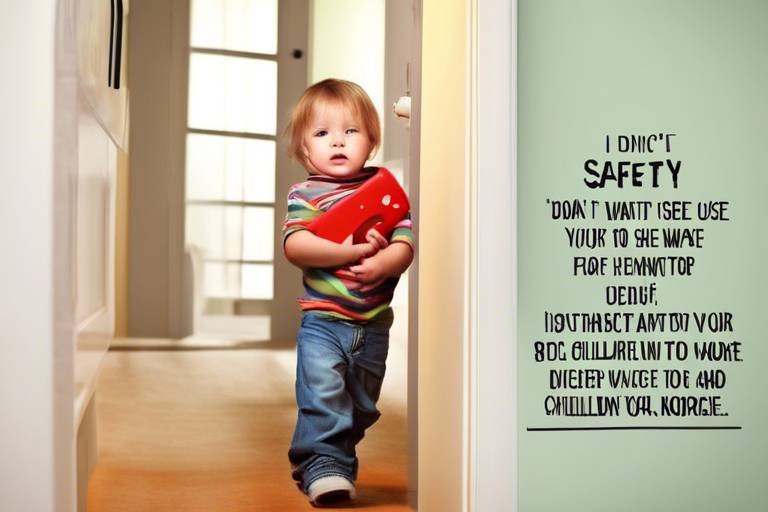Oral Health for Kids: Don’t Forget to Floss!
As parents, we often worry about our children's health, and one of the most overlooked aspects is their oral health. We regularly remind them to brush their teeth, but what about flossing? Flossing is often seen as an optional extra, but it plays a crucial role in maintaining healthy teeth and gums. Did you know that brushing alone only cleans about 60% of your child's tooth surfaces? The remaining 40% is where plaque and food particles can hide, leading to cavities and gum disease if not properly cleaned. In this article, we’ll explore why flossing is essential for children, how to choose the right floss, and practical tips for creating a flossing routine that sticks.
Flossing is essential for removing plaque and food particles that get stuck between teeth, where a toothbrush simply can't reach. Think of your child's mouth as a busy city; while the toothbrush is like a car cruising down the main roads, flossing is akin to the little alleyways that connect the neighborhoods. Without exploring these hidden paths, you miss out on a significant part of the cleaning process. Educating children about the importance of flossing can motivate them to develop a consistent oral hygiene routine. By making it a fun and integral part of their daily activities, you can help them understand that healthy teeth lead to a bright smile and better overall health.
When it comes to flossing, not all products are created equal. Selecting the appropriate type of floss can make the process easier and more enjoyable for kids. After all, if they enjoy it, they're more likely to stick with it! There are several options available, including waxed, unwaxed, and flavored varieties. Understanding these options can help you make the best choice for your child. For instance, waxed floss is often easier to slide between tight teeth, while unwaxed floss may be preferable for those who enjoy a more traditional texture. Flavored floss can turn a chore into a fun activity, making it more appealing for little ones.
Here’s a quick overview of the different types of dental floss:
| Type of Floss | Benefits |
|---|---|
| Waxed Floss | Slides easily between tight teeth |
| Unwaxed Floss | Traditional texture, may be preferred by some |
| Flavored Floss | Makes flossing fun and enjoyable for kids |
Flavored floss can make the experience more enjoyable for children, encouraging them to floss regularly. Popular flavors include bubblegum, fruit punch, and mint. These flavors can turn a mundane task into a delightful experience, making your child look forward to flossing instead of dreading it. Plus, the right flavor can enhance their overall oral care routine, ensuring they take their dental hygiene seriously.
Teaching children the correct flossing techniques is crucial for effective cleaning. Here’s a simple step-by-step guide to get them started:
- Take about 18 inches of floss and wrap the ends around your middle fingers, leaving a few inches to work with.
- Hold the floss tightly between your thumbs and index fingers.
- Gently slide the floss between your child's teeth, curving it around each tooth in a C-shape.
- Move the floss up and down to remove plaque and debris.
- Use a clean section of floss for each tooth to avoid spreading bacteria.
Establishing a daily flossing routine can help children develop lifelong habits. Just like brushing, flossing should be a non-negotiable part of their daily routine. One effective way to incorporate flossing is to tie it to another daily activity, like brushing their teeth. You could say, "After brushing, let’s make sure we floss too!" Consistency is key, and soon enough, they won’t even think about it—they’ll just do it!
Using visual cues and reminders can help children remember to floss daily. You can create a colorful chart that they can check off each day, or use fun stickers as rewards for consistent flossing. This not only keeps them engaged but also instills a sense of responsibility for their own oral health.
Reward systems can motivate children to maintain their flossing routine. Consider implementing a points system where they earn points for each successful flossing session. Once they reach a certain number of points, they can redeem them for a small prize or a fun outing. Positive reinforcement can go a long way in encouraging good habits!
Identifying and correcting common flossing mistakes can improve effectiveness and ensure children are benefiting from the practice. Some typical errors include:
- Not using enough floss: Make sure they use a sufficient length to clean all teeth.
- Flossing too aggressively: Teach them to be gentle to avoid hurting their gums.
- Skipping teeth: Remind them to floss between all teeth, not just the ones they can see.
By addressing these mistakes early on, you can help your child develop a more effective flossing technique that will serve them well throughout their life.
Q: How often should my child floss?
A: Ideally, children should floss at least once a day, preferably before bedtime.
Q: At what age should my child start flossing?
A: Once your child has two teeth that touch, it's time to start flossing.
Q: Can my child use regular floss?
A: Yes, but consider using kid-friendly options that are easier and more enjoyable for them.
Q: What if my child doesn’t want to floss?
A: Make it fun! Use flavored floss, set reminders, and create a reward system to encourage them.

The Importance of Flossing
When it comes to oral health, many parents focus primarily on brushing their children's teeth. While brushing is undoubtedly important, flossing is an equally crucial step that often gets overlooked. Why is flossing so vital? Simply put, it helps to remove plaque and food particles that get trapped between teeth—those hard-to-reach areas where toothbrushes just can't do their job effectively. Imagine trying to clean a narrow alley between two tall buildings; a broom might not fit, but a vacuum could reach every nook and cranny. That's exactly what flossing does for your child's mouth!
Flossing is essential for preventing cavities and gum disease. When plaque is allowed to build up, it can harden into tartar, leading to more serious oral health issues. By instilling the habit of flossing at a young age, you are setting your child up for a lifetime of healthy teeth and gums. This is not just about keeping their smile bright; it’s about promoting overall health. Did you know that poor oral hygiene can lead to other health problems, such as heart disease and diabetes? Yes, that’s right! The mouth is a gateway to the body, and keeping it clean is paramount.
Moreover, teaching children the significance of flossing can help them develop a consistent oral hygiene routine. When kids understand why they need to floss, they are more likely to take pride in their oral care. It's like teaching them to ride a bike; once they grasp the importance of balance and control, they become more confident and skilled. So, how can you motivate your child to embrace flossing as part of their daily routine? Here are a few tips:
- Lead by example: Show them that you floss regularly.
- Make it fun: Use flavored floss and colorful tools to make the experience enjoyable.
- Educate: Explain the benefits of flossing in a way they can understand.
In conclusion, flossing is not just an optional step in oral hygiene; it's a critical component that can have lasting effects on your child's health. By teaching them the importance of flossing and making it a fun part of their routine, you’re not just helping them maintain a beautiful smile; you're also giving them the tools they need for a healthy future.

Choosing the Right Floss
When it comes to maintaining your child's oral health, is just as important as brushing their teeth. Flossing can often feel like a chore, especially for kids who might not fully understand its significance. However, if you select the right type of floss, it can transform this daily task into a fun and engaging activity! Just like picking the right tool for a job, the right floss can make all the difference in how effective and enjoyable the experience is for your little ones.
There are several factors to consider when choosing floss for your child. First, think about their comfort level. Some children may find certain textures more appealing than others. For instance, waxed floss tends to glide between teeth more easily, which can be a big plus for kids with tighter spaces between their teeth. On the other hand, unwaxed floss offers a more traditional feel, which some kids might prefer. It’s all about finding what works best for your child’s unique needs!
Another exciting option is flavored floss. Imagine the difference it could make if your child looked forward to flossing because it tastes like their favorite fruit or candy! Flavored floss not only makes the process more enjoyable but can also encourage kids to develop a consistent flossing habit. Popular flavors include bubblegum, strawberry, and even mint. These flavors can help turn flossing into a delightful experience, rather than a mundane task.
To help you navigate the selection process, here’s a quick comparison table that highlights the benefits of different types of floss:
| Type of Floss | Benefits |
|---|---|
| Waxed Floss | Slides easily between teeth, great for tight spaces |
| Unwaxed Floss | Traditional texture, may provide better grip |
| Flavored Floss | Makes flossing enjoyable, encourages regular use |
Ultimately, the best floss for your child is the one that they will actually use. Don’t hesitate to let your child try out different types of floss to see what they prefer. You might even want to make a fun game out of it! Have them pick their favorite flavor or texture, and create a little flossing station in the bathroom. This way, they’ll feel more involved in their oral hygiene routine, and you’ll be setting them up for a lifetime of healthy habits.

Types of Dental Floss
When it comes to maintaining oral hygiene, choosing the right type of dental floss can make all the difference, especially for kids. The market is flooded with various options, each designed to cater to different needs and preferences. Understanding these types can empower parents to select the best floss for their little ones. Here’s a closer look at the most common types of dental floss available:
- Waxed Floss: This type of floss is coated with a thin layer of wax, making it glide easily between teeth. It’s particularly beneficial for children who have tightly spaced teeth, as it reduces the chances of the floss shredding or getting stuck.
- Unwaxed Floss: For those who prefer a more traditional feel, unwaxed floss is a great option. It tends to be thinner and may fit better in some spaces, but it can be slightly harder to maneuver between closely spaced teeth.
- Flavored Floss: Flavored options can turn flossing into a fun activity for kids. With flavors ranging from bubblegum to mint, these products can make the experience more enjoyable, encouraging children to develop a consistent flossing habit.
Each type of floss has its own unique benefits, and the choice often depends on your child’s specific needs. For instance, if your child is just starting to floss, a waxed or flavored option might make the process less intimidating and more appealing. On the other hand, if they’re more experienced, unwaxed floss could be a suitable choice for its traditional texture.
Moreover, some brands offer specialized floss designed for braces or other dental appliances. These products often come with a thicker, more durable design to withstand the added pressure of navigating around brackets and wires. It's essential to consider your child's dental situation when selecting the right floss.
In conclusion, the right type of dental floss can transform the flossing experience for kids. By understanding the differences between waxed, unwaxed, and flavored options, you can help your child establish a positive oral hygiene routine that lasts a lifetime.
Q1: How often should my child floss?
A1: Ideally, children should floss at least once a day to effectively remove plaque and food particles from between their teeth.
Q2: Can my child use regular dental floss?
A2: Yes, children can use regular dental floss, but it's often beneficial to choose a type that is easier for them to handle, such as waxed or flavored floss.
Q3: What should I do if my child struggles with flossing?
A3: If your child finds flossing difficult, consider using floss picks or dental tools designed for kids, which can make the process simpler and more enjoyable.

Waxed vs. Unwaxed Floss
When it comes to choosing dental floss, one of the first decisions parents face is whether to go for waxed or unwaxed floss. Each type has its own unique characteristics that can affect how effectively your child cleans between their teeth. Understanding these differences can help you make an informed choice that suits your child's needs and preferences.
Waxed floss is coated with a thin layer of wax, making it smoother and easier to slide between tight spaces. This can be especially beneficial for children who might struggle with the friction of unwaxed floss. If your child has teeth that are close together, waxed floss can glide in effortlessly, making the experience less frustrating and more enjoyable. Plus, the wax coating can help prevent shredding, which is a common issue when using unwaxed floss.
On the other hand, unwaxed floss offers a more traditional feel. Some children may prefer the texture of unwaxed floss, as it can feel more substantial in their hands. While it may not slide between teeth as easily as waxed floss, it can still effectively remove plaque and debris when used correctly. For kids who are a bit older and more adept at flossing, unwaxed floss can be a great option to teach them proper technique.
Here’s a quick comparison to help you decide:
| Type of Floss | Pros | Cons |
|---|---|---|
| Waxed Floss |
|
Can feel slippery for some kids |
| Unwaxed Floss |
|
Can shred more easily |
Ultimately, the choice between waxed and unwaxed floss will depend on your child's comfort and preference. It’s always a good idea to let them try both types and see which one they feel more confident using. Remember, the goal is to make flossing a fun and rewarding part of their daily routine!

Flavored Floss Options
When it comes to making flossing a fun and engaging activity for kids, flavored floss can be a game changer. Imagine a child who sees flossing as a chore suddenly being excited about it just because it comes in their favorite flavor! Flavored floss not only adds a delightful twist to the mundane task of cleaning between teeth but also can significantly enhance their oral care routine. Many kids are more likely to reach for that colorful package of floss if it promises a burst of strawberry or bubblegum flavor.
There are several popular flavors available that can cater to a range of tastes. Let’s take a look at some of the most loved options:
- Mint: A classic choice that refreshes the mouth and leaves kids feeling like they just left the dentist.
- Fruit Flavors: Flavors like grape, watermelon, and orange can make flossing feel like a treat rather than a task.
- Bubblegum: This flavor is often a hit with younger children, making them feel like they’re indulging in a sweet snack.
- Cinnamon: A unique option that can appeal to slightly older kids who might enjoy something different.
Choosing a flavored floss can also help in creating a positive association with oral hygiene. When children enjoy the taste of the floss, they are more likely to use it consistently, which is essential for maintaining healthy gums and teeth. Additionally, flavored floss can serve as a great conversation starter about the importance of oral health. Parents can encourage their children to try different flavors, making flossing a fun experiment rather than a mundane routine.
Ultimately, the right flavored floss can be a stepping stone toward establishing a lifelong habit of good oral hygiene. By incorporating these enjoyable options into their daily routine, parents can help their kids not only keep their teeth clean but also foster a positive attitude toward dental care. And who knows? They might even look forward to flossing as much as they do brushing!

Flossing Techniques for Kids
Teaching kids how to floss properly is a vital step in ensuring their oral health. It’s not just about getting the floss between their teeth; it's about doing it effectively. Here’s a simple, step-by-step guide to help your little ones master the art of flossing. Think of it like teaching them to ride a bike; with the right guidance, they'll soon be doing it on their own!
First, start by cutting a piece of floss about 18 inches long. This length is perfect because it gives kids enough floss to work with without it becoming too messy. Show them how to wrap the ends around their middle fingers, leaving about 1-2 inches of floss to work with. This is where the magic happens! It’s like holding the reins of a horse; they need to have control.
Next, instruct them to gently slide the floss between their teeth using a back-and-forth motion. It’s crucial to remind them to be gentle; they’re not trying to saw through anything! The goal is to avoid hurting their gums. Once the floss reaches the gum line, they should curve it around the tooth in a C-shape and slide it up and down gently. This technique helps to remove plaque and food particles that a toothbrush might miss. It’s like using a tiny shovel to dig out the hidden treasures between their teeth!
Encouraging your child to floss all their teeth is important, so remind them not to skip any spots. A fun way to keep track is to make it a game! For instance, you can create a chart that tracks which teeth have been flossed each day. This way, they can see their progress and feel a sense of accomplishment. Plus, it adds an element of fun to what might otherwise feel like a chore.
Lastly, don’t forget to demonstrate the process yourself. Kids learn best by watching, and seeing you floss can motivate them to follow suit. Make it a family affair! Flossing together can turn a mundane task into a bonding experience. Just like sitting down for dinner, it can become a cherished part of your daily routine.
- How often should my child floss? Ideally, children should floss at least once a day, preferably before brushing their teeth at night.
- What age should my child start flossing? Children can start flossing as soon as they have two teeth that touch. This usually happens around age 2 or 3.
- Can my child use regular floss? Yes, but it’s often easier for kids to use flossers or flavored floss, which can make the process more enjoyable.
- What should I do if my child doesn't want to floss? Try to make it fun! Use flavored floss, set up a reward system, or even create a fun song about flossing to keep them engaged.

Creating a Flossing Routine
Establishing a daily flossing routine is not just about keeping those pearly whites shining; it’s about laying the groundwork for a lifetime of healthy habits. Think of flossing as a secret weapon in the battle against cavities and gum disease. Just like brushing, it’s an essential part of your child’s oral hygiene arsenal. But how do you make it a regular part of their day? Here are some practical tips to help you incorporate flossing into your child’s daily routine.
First and foremost, timing is everything. Choose a time that works best for your family. Many parents find that flossing right after brushing in the evening works wonders. This way, it becomes part of the bedtime ritual. You can even turn it into a fun family activity! Picture this: everyone in the bathroom, flossing together, sharing stories about their day. It can transform a mundane task into a bonding experience.
Another crucial element is to create a flossing-friendly environment. Make sure that the floss is easily accessible. You could keep it in a special spot, like a colorful container on the bathroom counter or even in a fun, themed holder that your child loves. When kids see their favorite characters or colors, they’ll be more inclined to reach for that floss. You might even consider using a floss pick, which can be easier for little hands to manage.
To help remind your child, consider using visual cues. A simple chart on the bathroom wall can do wonders. You can create a fun checklist where they can mark off each day they floss. This not only serves as a reminder but also gives them a sense of accomplishment. Kids love to see their progress, and a visual representation can motivate them to keep going.
Additionally, don’t underestimate the power of incentives. Kids respond well to rewards. You could set up a reward system where they earn points for each day they floss, which can be exchanged for a small treat or a fun outing. This positive reinforcement can make flossing feel less like a chore and more like a game. Remember, the goal is to make flossing a fun and rewarding experience, not a punishment!
Lastly, be patient and lead by example. Kids learn a lot by watching their parents. If they see you flossing regularly and enjoying it, they are more likely to follow suit. Share your own flossing experiences with them—talk about how great it feels to have clean teeth and fresh breath. Your enthusiasm can be contagious!
In summary, creating a flossing routine for your child is all about making it accessible, engaging, and rewarding. By establishing a consistent practice, you help instill a sense of responsibility towards their oral health. Who knows? They might even end up loving it!

Setting Reminders
Getting kids to remember to floss can sometimes feel like trying to get a cat to take a bath—it's a challenge! But fear not, there are creative ways to set reminders that can make the process fun and engaging. One effective method is to use visual cues. For instance, placing a colorful floss container next to their toothbrush can serve as a daily reminder. You can even turn it into a game by choosing a fun character or theme that resonates with your child. This way, they associate flossing with something they enjoy, making it less of a chore.
Another strategy is to establish a routine. Just like brushing teeth, flossing should become a non-negotiable part of their daily hygiene. You might say, “After breakfast and before bed, we floss!” This consistency helps children understand that flossing is as important as any other part of their day. To further reinforce this habit, consider using a chore chart or a checklist. Kids love to check off tasks they've completed, and seeing their progress can be a great motivator.
For tech-savvy families, leveraging technology can be a game changer. Setting reminders on a smartphone or using a smart home device can prompt your child at the right time. For example, you could say, “Alexa, remind us to floss at 7 PM!” This not only makes it fun but also teaches them responsibility for their own oral health.
Lastly, don't underestimate the power of positive reinforcement. Celebrate their successes, no matter how small. You could create a reward system where they earn stickers or points for each day they remember to floss. After a certain number of points, they could redeem them for a small treat or a fun activity. This not only encourages flossing but also fosters a sense of accomplishment.
- How often should my child floss? Ideally, children should floss at least once a day, preferably before bedtime.
- What age should my child start flossing? It's recommended to start flossing as soon as two teeth touch, usually around age 2-3.
- Can my child use regular dental floss? Yes, but consider using kid-friendly floss that is easier for them to handle.
- What if my child doesn't want to floss? Try to make it a fun activity, perhaps by using flavored floss or setting up a reward system.

Incentivizing Flossing
Getting kids to floss can sometimes feel like pulling teeth—pun intended! But with a little creativity and some fun incentives, you can transform this chore into a rewarding part of their daily routine. Kids love rewards, and by setting up a system that acknowledges their flossing efforts, you can encourage them to embrace this essential habit. Think of it like a game; the more they play, the more they win!
One effective way to incentivize flossing is to create a flossing chart. This visual tool allows children to track their progress. Each time they floss, they can place a sticker on the chart. After reaching a certain number of stickers, they can earn a small reward, such as a new toy or a special outing. This not only makes flossing fun but also instills a sense of accomplishment. Kids thrive on recognition, and seeing their achievements visually can motivate them to keep going!
Another idea is to incorporate a reward jar. For each successful flossing session, kids can drop a token or a marble into the jar. Once the jar is full, they can choose a larger reward, like a family movie night or a trip to their favorite ice cream shop. This method not only encourages them to floss regularly but also teaches them about delayed gratification, a valuable life lesson.
Additionally, consider making flossing a family affair. When kids see their parents or siblings flossing, they’re more likely to follow suit. You could even turn it into a fun challenge, where everyone in the family tries to floss every day for a week. At the end of the week, celebrate with a fun family activity, reinforcing the idea that taking care of teeth is a shared commitment.
Lastly, don’t underestimate the power of positive reinforcement. Praise your child for their efforts, no matter how small. A simple “Great job flossing today!” can go a long way in boosting their confidence and encouraging them to keep up the good work. Remember, the goal is to make flossing feel less like a chore and more like a fun and rewarding part of their daily routine!
Q: At what age should my child start flossing?
A: It’s recommended to start flossing when your child has two teeth that touch. This usually occurs around the age of 2-3 years. However, it’s essential to supervise their flossing until they can do it effectively on their own, typically around age 8.
Q: How often should my child floss?
A: Ideally, children should floss at least once a day, preferably before bedtime. This helps remove plaque and food particles that may have accumulated throughout the day.
Q: What if my child doesn’t like the taste of regular floss?
A: There are many flavored floss options available that can make the experience more enjoyable. Experiment with different flavors to find one that your child likes!
Q: Can I use floss picks instead of regular floss?
A: Yes! Floss picks can be a great alternative, especially for younger children who may find traditional floss challenging to handle. Just ensure they are still using them correctly for effective cleaning.

Common Flossing Mistakes
Flossing is a crucial part of maintaining oral health, yet many children (and even adults!) make common mistakes that can hinder its effectiveness. Understanding these pitfalls can help parents guide their children toward better flossing habits. One major mistake is not using enough floss. Many kids (and adults, too!) tend to use a short piece, which makes it difficult to wrap the floss around their fingers properly. Ideally, you should use about 18 inches of floss, allowing enough length to clean between each tooth effectively.
Another frequent error is flossing too aggressively. Kids might think that more force means better cleaning, but this isn't the case. Flossing should be a gentle process. If they yank the floss too hard, it can cause damage to the gums, leading to bleeding and discomfort. Instead, teach them to slide the floss gently between their teeth, forming a C-shape around each tooth to remove plaque and food particles.
Additionally, many children forget to floss behind the last tooth. It’s easy to overlook this area, but it’s just as important as the rest. Food particles can accumulate there, leading to cavities. Make it a habit for your child to floss every single tooth, including those tricky back ones. You might even consider using a mirror to help them see what they’re doing.
Here’s a quick table summarizing the common mistakes and how to correct them:
| Mistake | Correction |
|---|---|
| Not using enough floss | Use about 18 inches of floss for better reach. |
| Flossing too aggressively | Gently slide the floss between teeth without forcing it. |
| Neglecting the back teeth | Ensure to floss behind the last tooth for complete cleaning. |
Incorporating these tips into your child’s flossing routine can significantly enhance their oral hygiene. It’s all about making flossing a fun and effective part of their day. Remember, the goal is to create a positive experience around oral care, so celebrate their successes, no matter how small!
Q: How often should my child floss?
A: Ideally, children should floss at least once a day, preferably before bedtime, to remove any food particles that may have accumulated throughout the day.
Q: At what age should my child start flossing?
A: Children can start flossing as soon as they have two teeth that touch. This usually happens around the age of 2-3 years.
Q: Can I use a floss pick instead of traditional floss?
A: Yes, floss picks can be a great alternative for kids, especially if they find traditional floss challenging. However, it's still essential to ensure they are using them correctly.
Q: What should I do if my child is resistant to flossing?
A: Make it a fun activity! You can set a timer, play their favorite song while they floss, or even floss together to encourage them.
Frequently Asked Questions
- Why is flossing important for kids?
Flossing is crucial for kids because it removes plaque and food particles that toothbrushes often miss. By flossing, children can help prevent cavities and gum disease, which are common issues that can affect their oral health.
- At what age should my child start flossing?
It's recommended that children start flossing as soon as they have two teeth that touch. This usually happens around the age of 2 or 3. However, parents should assist them until they are about 8 years old to ensure proper technique.
- What type of floss is best for children?
The best type of floss for children is often flavored waxed floss, as it is easier to use and can make flossing more enjoyable. Flavored options can encourage kids to develop a flossing habit, making it less of a chore.
- How can I teach my child to floss properly?
To teach your child to floss properly, start by demonstrating the technique yourself. Show them how to use a piece of floss about 18 inches long, wrap it around their fingers, and gently slide it between their teeth in a C-shape. Practice together until they feel confident.
- What are some common mistakes kids make while flossing?
Common mistakes include using too little floss, being too rough with their gums, or skipping teeth altogether. It's important to guide them on the correct technique to maximize the benefits of flossing.
- How can I make flossing fun for my child?
Making flossing fun can include using flavored floss, creating a reward system, or turning it into a game. You can also set a timer and challenge them to floss before the timer goes off, making it an engaging activity.
- Should I be concerned if my child doesn't want to floss?
It's normal for kids to resist flossing at first. However, if they consistently refuse, it might be worth discussing with their dentist. You can also try different types of floss or techniques to find what works best for them.



















